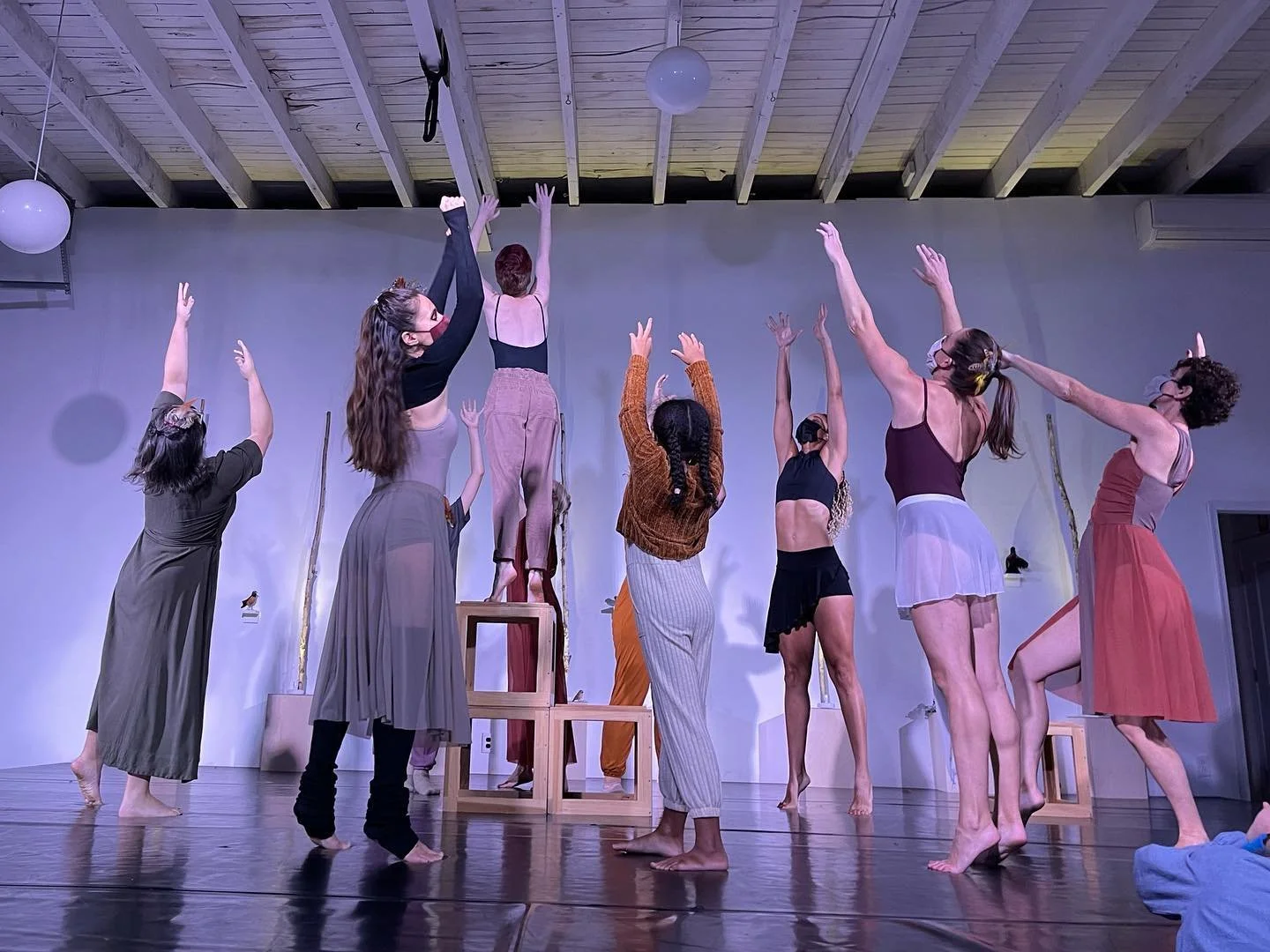Annie-B Parson & rule-Breaking
dancers in Of A Feather (Philly PACK, 2021) celebrate differences and similarities. Photo by Kat Caro.
Annie-B Parson and Permission To Break the Rules in dance…and in life.
“When an artist breaks apart familiar structures and reinvents them, there is disruption, and most of the gatekeepers and audiences are disturbed by this, but the audiences and the gatekeepers are unaware of what exactly is bothering them, and they just want the artist who is disrupting them to go away. But a few audience people, they crave the re-invention of structure, and these audiences are called ‘adventurous.’ I think they have just spent more time in the woods.”
—Annie-B Parson, The Choreography of Everyday Life, 2022.
One of my first really adventurous dance-theatre experiences happened in July, 2015 when I attended Big Dance Theater’s Alan Smithee Directed This Play: Triple Feature at Jacob’s Pillow Dance Festival in Becket, MA. From the audience, I sat and absorbed choreographer Annie-B Parson’s rule-breaking, and I remember feeling authentically inspired and empowered to make honest, artist-centered dance-theatre with my students.
At 33 years old, I was just starting to feel the effects of life-long ballet training. Decades of forced turn-out and pointed toes were only beginning to take its toll on my body. My knees, hips, ankles and feet were starting to ache, not to mention loudly crack. My orchestral bones sounded like a lightning storm all the time.
Watching Annie-B Parson’s choreography awaked something spiritual and truthful in me. Her dance company consisted of strong, healthy, beautiful dancers, but they were older than any professional dancers I’d seen in a performance. I always thought dancers had to retire at twenty-five years old because their bodies couldn’t handle the stress, but here I was watching Liz Dement, in her forties, dancing powerfully and purposefully. She moved like a great warrior-giant, and her artistry was unmatched. I had not seen this level of expression before on any other dancer.
Annie-B Parson’s choreography consisted of pedestrian gestures and traffic patterns one would see in every day life. She used music, text and sound to underscore sequences of movement that reflected the ordinary. This was my first time witnessing dance-as-theatre, and it was like looking in a mirror. I saw myself in each motion, and I walked away from the performance knowing I wanted to challenge the dance curriculum I had grown up studying: classical ballet.
Ballet is beautiful, and we love to revere it for it’s deep-rooted foothold in our culture. But ballet is violent on young bodies, it’s dangerous, and it’s highly disfiguring. You can look at any ballet dancer’s feet and know it’s true. This is why so many professional ballet dancers’ careers are over in their twenties. Most bodies can’t sustain the stress that ballet demands.
I do not offer classical ballet curriculum at my performance education center. Once I started feeling the effects of ballet on my joints and feet, I knew I could not in good conscience offer this training to young people. Instead, I offer a dance training curriculum that teaches safe jumping, turning, partnering and floor-work technique without any forced turnout or pointe. My goal is to train life-long dancers who feel confident in movement, and also feel healthy and joyful while dancing.
My curriculum focuses on meeting the dancer in their natural body-form, and empowering them with tools of artistic expression. Our focus is musicality, character development, expression AND technique. I also instill a strong appreciation for improvisation and shape-making using real-world movement; the dance of everyday life.
Annie-B Parson describes an experience she had while witnessing dance of everyday life in her book The Choreography of Everyday Life:
“When Donald Trump lost his job, there was large-scale spontaneous theater all across the country, a great fanfare, a raising of voices and dancing in the streets, and these dances were as natural as a leaf growing on a tree, and the trees were dancing too in reciprocity of the joy of the city. Long before Trisha Brown, before ballet, before disco dances and round dances and square dances, there was ecstatic dancing…we are still fundamentally the same, I thought. We are essentially a body in space with other bodies, expressing how we feel through our dances.”
Watching Annie-B Parson’s choreography informed how I choreograph in my classroom. I will always attempt to capture as she says, “essentially bodies in space, expressing how we feel through dance.”
Thank you, Annie-B, for your inspiration.
